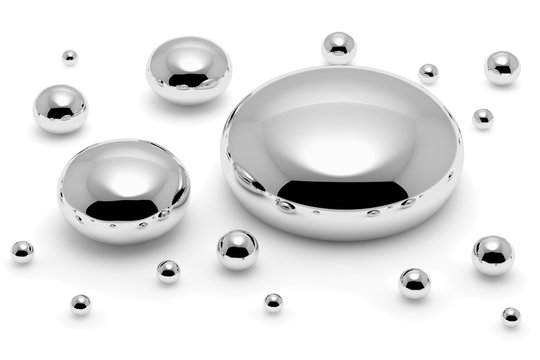We know that water drops are spherical due to surface tension since it tries to minimize the surface area. But in that case why not a big water body as a whole stay spherical? The water taken in a glass adjusts itself according to the glass but why doesn't it form the spherical shape like a water drop?
-
2$\begingroup$ The surface tension doesn't have enough oomph to make larger bodies of water take a sperical shape. $\endgroup$– Chet MillerCommented Feb 4, 2023 at 19:57
-
$\begingroup$ Imagine a water balloon. The envelope of the balloon acts somewhat like super-strength surface tension, and the shape of the water becomes more like a sphere and less like the shape of whatever container the balloon sits in. $\endgroup$– Solomon SlowCommented Feb 5, 2023 at 2:21
3 Answers
Water drops are spherical only when free of externally applied surface forces. Water in a macroscale container is subjected to forces from the container walls (e.g., a 4900 N/m rate of increase vertically for the lateral force on the sidewalls of a container with 1 m length and width), which dominate over the surface tension (0.072 mN/m for lateral extension of a rectangular surface region), leaving only a faint trace—the meniscus—of the latter.
Due to gravity.
There are videos showing how a not so small quantity of water becomes spherical in the ISS. Inside the ship there is air pressure but no gravity, and the spherical shape is the outcome. The effect of gravity can be simulated by a plate accelerated over the water drop. The sphere will be squeezed to wet the plate surface as it happens at the surface of the earth.
A water droplet will take the shape which minimises its potential energy.
With no external forces acting eg gravitational attraction the shape is one for which the surface area for a given volume is a minimum - a sphere. This is because work needs to be done to create surface due to surface tension.
With a gravitational field present there is going to be a contribution from gravitational potential energy which is reduced if the centre of mass is lowered.
To lower the centre of mass of a sphere, keeping the volume constant, requires the shape the shape to change which will invariable increase the surface area and hence the contribution from surface tension.
So the shape taken is a balance between the decrease in the gravitational potential energy and the increase in the contribution due to surface tension.
Here is an image of some mercury droplets showing that as the droplets gets large in volume the effect of the gravitational force becomes more pronounced.
However, that is not the end of the story.
There can be another contribution depending on whether of not the liquid "wets" a surface.
Mercury shows the effect that I described because it did not adhere to the surface below it whereas if you tried to do the same thing with water you may or may not get the same effect.
If the glass is clean then the forces of adhesion (between the molecules of glass and the molecules of water) will be larger than the forces of cohesion (between the molecules of water) and the water will wet the glass with the result that it spreads out over the surface of the glass until a minimum energy state reached. With the glass surface surface contaminated in some way, eg with a very thin layer of grease, the water will not wet the the surface as the forces of cohesion between water molecules are greater than the forces of adhesion between molecules of water and grease.
The water taken in a glass adjusts itself according to the glass but why doesn't it form the spherical shape like a water drop?
That is because the potential spherical drop is so large the gravitational forces win hands down and to minimize the energy the centre of mass of the water is as low as possible.

